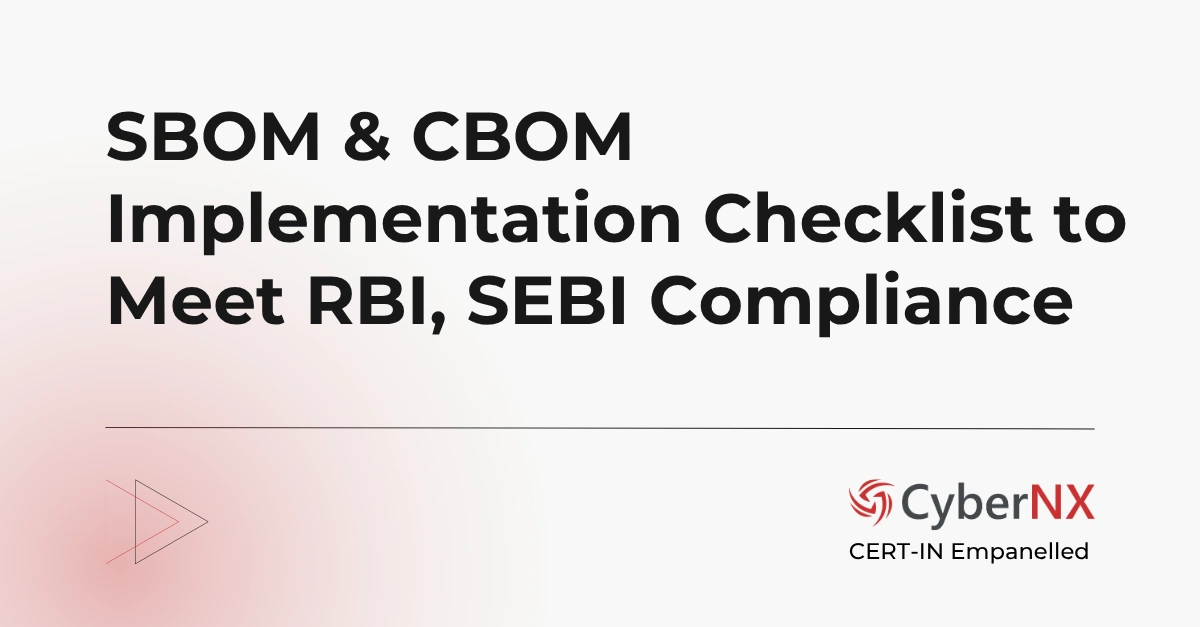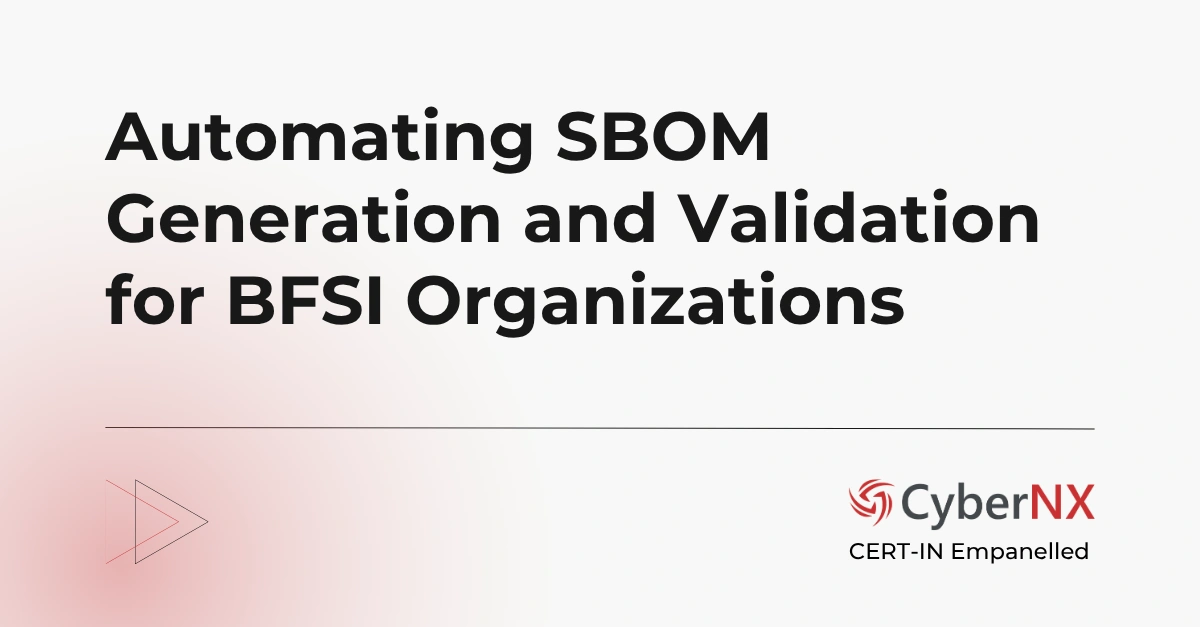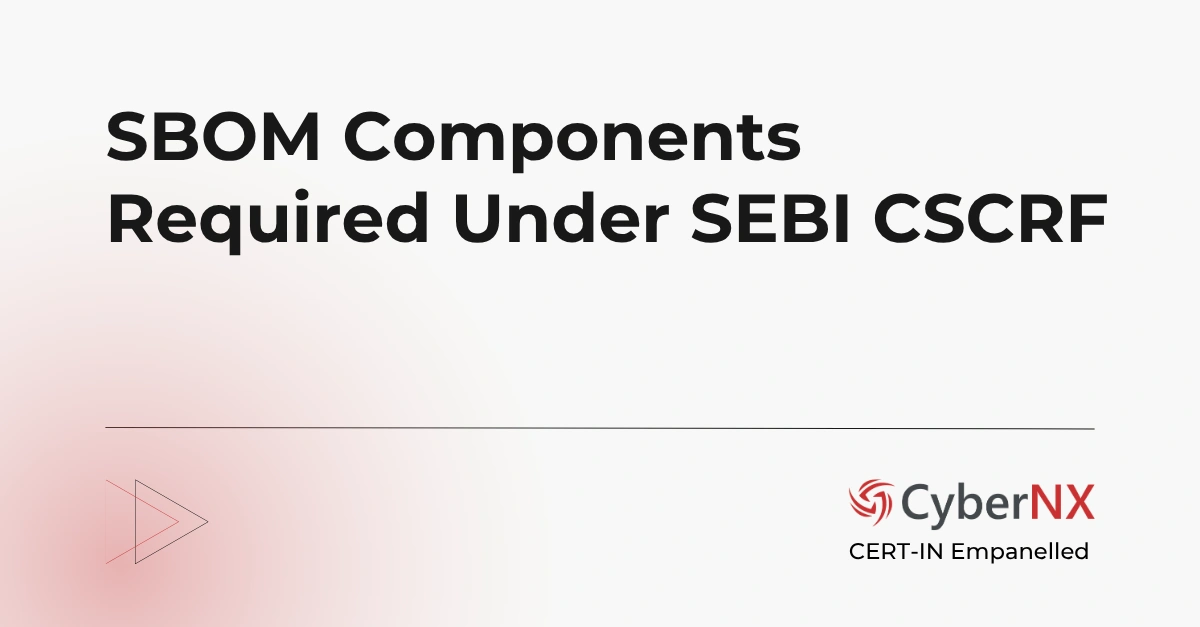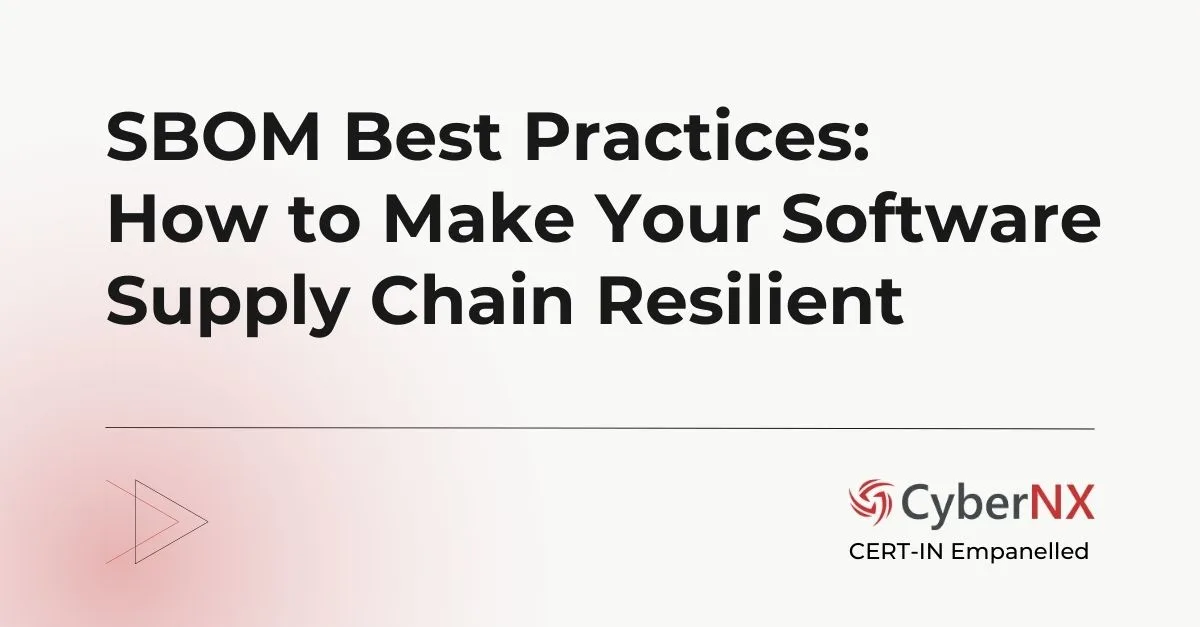
SBOM & CBOM Implementation Checklist to Meet RBI, SEBI Compliance
India’s financial sector is moving towards deeper supply-chain transparency. Banks, NBFCs, exchanges, brokers and fintechs now face growing expectations to
Gain expert insights on Software Bill of Materials (SBOM) to improve visibility, reduce supply chain risks and software integrity from development to delivery.

India’s financial sector is moving towards deeper supply-chain transparency. Banks, NBFCs, exchanges, brokers and fintechs now face growing expectations to

India has taken a significant step to boost transparency and resilience in its software supply chain. With CERT-In, SEBI and

Software Bill of Materials (SBOM) Report provides a structured view of all software components, dependencies and risks. Without it, organisations

In the banking, financial services and insurance (BFSI) sector the software supply-chain is increasingly complex. Legacy systems, third-party libraries, open-source

Regulated entities (REs) in the Indian securities ecosystem must align with SEBI’s CSCRF and establish a software-supply-chain visibility programme. A

Financial services, without a doubt, is a highly regulated sector today. This is because of the growing concern around cybersecurity.

SEBI’s Cybersecurity and Cyber Resilience Framework (CSCRF) has made Software Bill of Materials (SBOM) a mandatory element for core and

SBOMs have become critical for security and crucial for compliance. In a world where software combinations exponentially increase every day,

Software Bill of Materials (SBOM) helps with two things: transparency in your software and tracking of vulnerabilities. Many organizations know
WhatsApp us